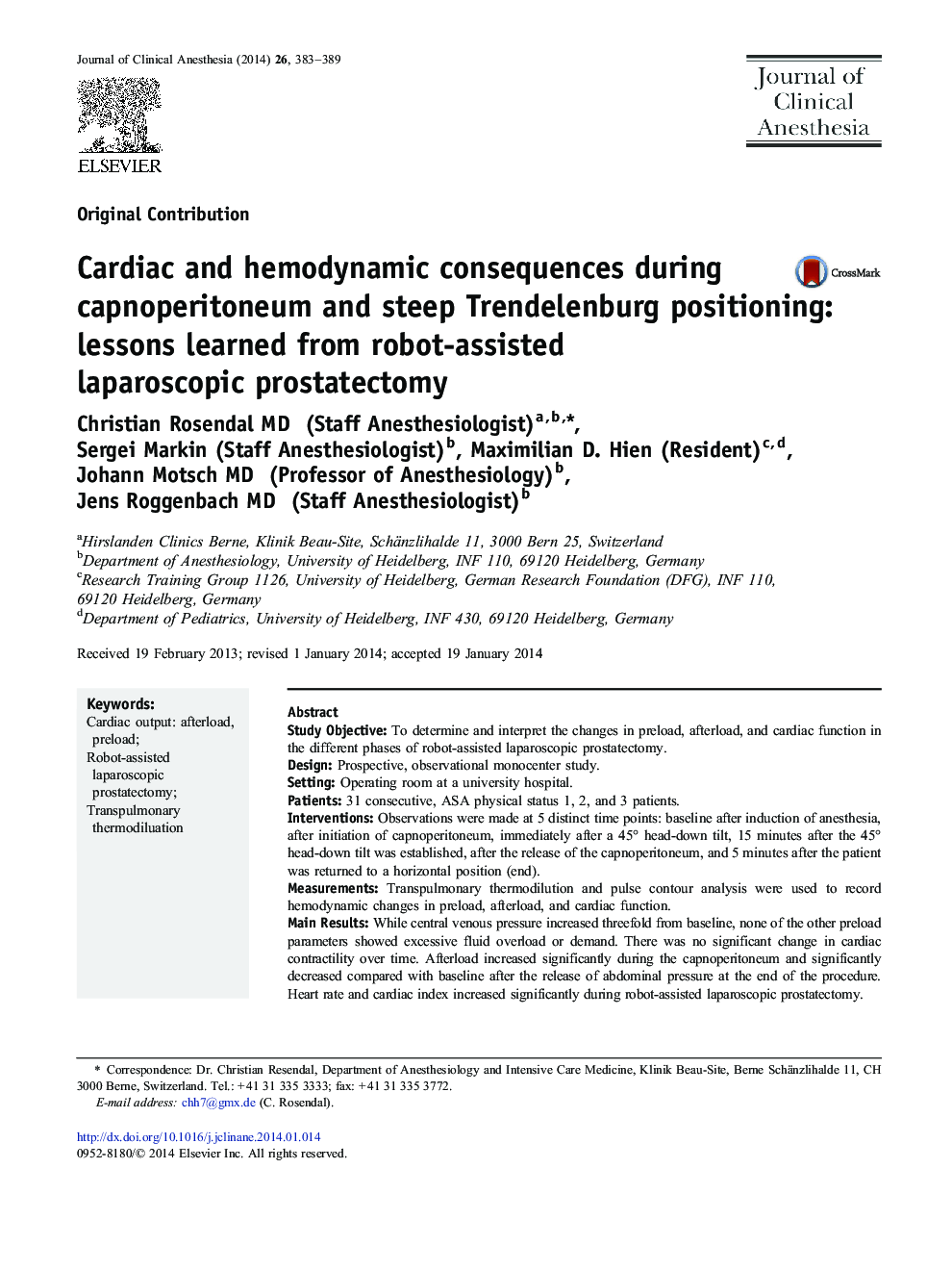| Article ID | Journal | Published Year | Pages | File Type |
|---|---|---|---|---|
| 2762916 | Journal of Clinical Anesthesia | 2014 | 7 Pages |
Study ObjectiveTo determine and interpret the changes in preload, afterload, and cardiac function in the different phases of robot-assisted laparoscopic prostatectomy.DesignProspective, observational monocenter study.SettingOperating room at a university hospital.Patients31 consecutive, ASA physical status 1, 2, and 3 patients.InterventionsObservations were made at 5 distinct time points: baseline after induction of anesthesia, after initiation of capnoperitoneum, immediately after a 45° head-down tilt, 15 minutes after the 45° head-down tilt was established, after the release of the capnoperitoneum, and 5 minutes after the patient was returned to a horizontal position (end).MeasurementsTranspulmonary thermodilution and pulse contour analysis were used to record hemodynamic changes in preload, afterload, and cardiac function.Main ResultsWhile central venous pressure increased threefold from baseline, none of the other preload parameters showed excessive fluid overload or demand. There was no significant change in cardiac contractility over time. Afterload increased significantly during the capnoperitoneum and significantly decreased compared with baseline after the release of abdominal pressure at the end of the procedure. Heart rate and cardiac index increased significantly during robot-assisted laparoscopic prostatectomy.ConclusionsSelective arterial vasodilation at the time of capnoperitoneum may normalize afterload and myocardial oxygen demand.
